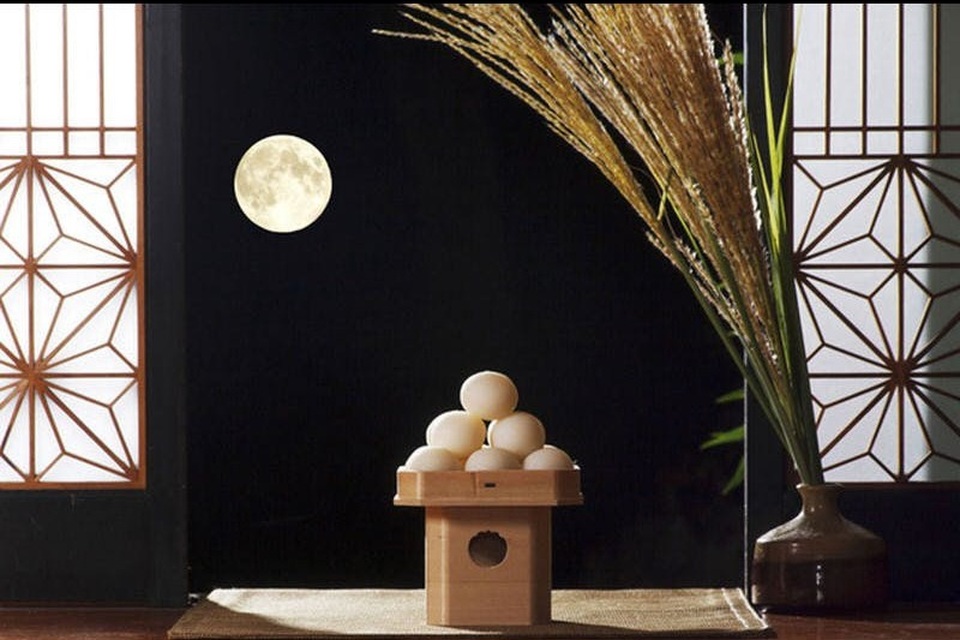In Japanese folklore, the moon is more than just a celestial wonder. It’s home to the selfless rabbit known as Tsuki no Usagi. This tale of kindness and sacrifice has captured the hearts of many. It’s rooted in Buddhist traditions and shared across East Asia.
The story tells of a rabbit who offered itself in an act of ultimate generosity. This act earned it a place on the moon to be admired forever. Today, this legend is central to Japan’s Tsukimi celebrations. People honor the moon and share seasonal delights like mochi, reminding us of the connection between mythology and cultural tradition.
The Legend of the Rabbit Moon Story from Japan
The tale of Tsuki no Usagi has enchanted Japan for centuries. It’s a story of compassion and selflessness. It explains the rabbit’s iconic spot on the moon and teaches us about generosity.
Whether told during festivals or under a full moon, the legend holds a special place in Japanese culture.
The Story Retold Through Generations
One fateful evening, the Man on the Moon, disguised as a weary beggar, descended to Earth. He was searching for kindness. He wandered through a forest where he met three animals: a fox, a monkey, and a rabbit.
Moved by his hunger, the trio sprang into action. The fox caught fish from the stream. The monkey gathered fruits from the trees. But the rabbit, small and unable to swim or climb, had nothing to offer but blades of grass.
Knowing this wouldn’t suffice, the rabbit proposed something unimaginable. He asked the others to build a fire. Once the flames rose, the rabbit leapt into the fire, offering himself as a meal to save the beggar.
But the flames did not consume him.
At that moment, the beggar revealed his true identity. He was no ordinary man but a celestial deity—the Man on the Moon. Deeply moved by the rabbit’s self-sacrifice, the deity pulled the unharmed rabbit from the fire and carried him to the heavens.
The deity placed the rabbit’s image on the moon to honor such a pure act of compassion. It remains visible to all who look up at the night sky.
This story, passed on through generations, reminds us of the value of giving all we can. No matter how small or insignificant we think, our contributions might be.

For more details on this beautiful story and its connection to Japanese festivals, check out this in-depth exploration of Tsuki no Usagi.
A Buddhist Influence: Śaśajâtaka
The story of the rabbit on the moon in Japanese folklore is deeply connected to Buddhist teachings. It’s rooted in the Śaśajâtaka from the Jataka tales. These tales recount the Buddha’s previous lives, often showcasing acts of selflessness and moral virtue.
The story of Śaśajâtaka aligns closely with these ideals. It emphasizes compassion, sacrifice, and the karma of good deeds.
The Original Tale and Its Virtues
In the Śaśajâtaka, four animals—a rabbit, a monkey, an otter, and a jackal—decide to help a hungry beggar on a full moon night. Each animal collects food for the beggar. The monkey gets fruits, the otter catches fish, and the jackal finds curdled milk and a lizard. The rabbit, unable to find food, decides to offer itself by jumping into the fire.
As the fire burns, the beggar is revealed to be Śakra, the ruler of heaven. Moved by the rabbit’s sacrifice, Śakra saves the rabbit from the fire. The rabbit is then immortalized on the moon as a symbol of ultimate compassion.
Connecting Buddhism to Japanese Folklore
The Śaśajâtaka story is loved by Buddhists and played a big role as Buddhism spread. When it reached Japan, it mixed with local beliefs. The story of the rabbit became key in Japan’s Tsukimi (moon-viewing) festivals.
In Japan, the story of the rabbit on the moon teaches about humility, generosity, and purity. These values are important in Buddhism and Japanese culture. Today, the rabbit on the moon inspires kindness and is a big part of moon festivals.
For more on these Buddhist tales, check out the Jataka collection here.
Tsukimi: Japan’s Harvest Moon Celebration
Tsukimi, or “moon-viewing,” is a special tradition in Japan. It honors the moon and the harvest season. Families and friends come together in autumn to celebrate the full moon with rituals, foods, and decorations.
Traditions of Tsukimi
Tsukimi is all about honoring the moon and the harvest. People make offerings to show thanks and ask for blessings.
- Tsukimi Dango: These small, white rice dumplings look like the full moon. They are often made in a pyramid of 15 to honor the fifteenth night. This guide explains their importance.
- Seasonal Produce: Foods like chestnuts, taro, and sweet potatoes are also part of the celebration. They show appreciation for nature’s gifts.
- Decorations: Homes are decorated with suzuki (Japanese pampas grass). They are believed to keep evil spirits away and remind us of the moon’s beauty.
The main event is watching the moon together. Families put offerings where the moon is clear. It’s a peaceful time to think and bond.
Imagine looking at a bright moon while eating these treats. It’s easy to see why this tradition is still loved today.

The Heian Period Origin of Tsukimi
Did you know Tsukimi started in Japan’s Heian period (794–1185)? It was a time of art, poetry, and elegance for the nobles. Inspired by the Chinese Mid-Autumn Festival, moon-viewing became a sign of refinement and culture.
Japanese nobles had big parties under the full moon, often by water. The moon’s reflection sparkled with the stars. These parties were not just for the view. They were also a chance to show off literary and musical skills.
- Poetry and Music: Poems about the moon were shared or performed. They connected nature with human feelings. The moon was seen as a symbol of fleeting beauty and life’s impermanence.
- Evolution into Popular Culture: These practices moved from nobles to all people. The focus changed to praying for a good harvest and family health. It became more connected to everyday life.
To learn more about Tsukimi’s origins, check out this article. It’s interesting to see how a tradition of elegance became one that connects us with nature, the moon, and the seasons.
Conclusion
The story of the Rabbit on the Moon still touches our hearts. It teaches us about kindness and generosity. This tale is part of Japanese folklore and Buddhism, showing the power of selflessness.
When you look at the full moon, try to find the rabbit. It’s a reminder to be compassionate and value stories that unite us. What lessons will this lunar symbol teach you?



